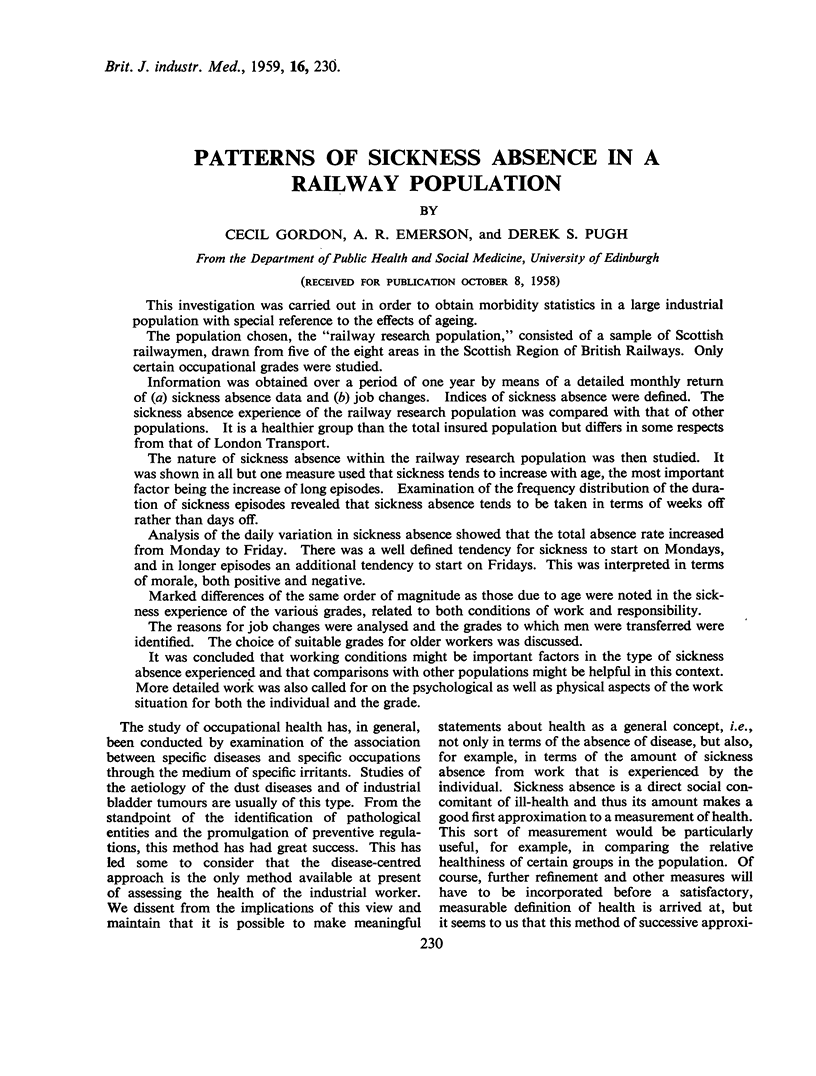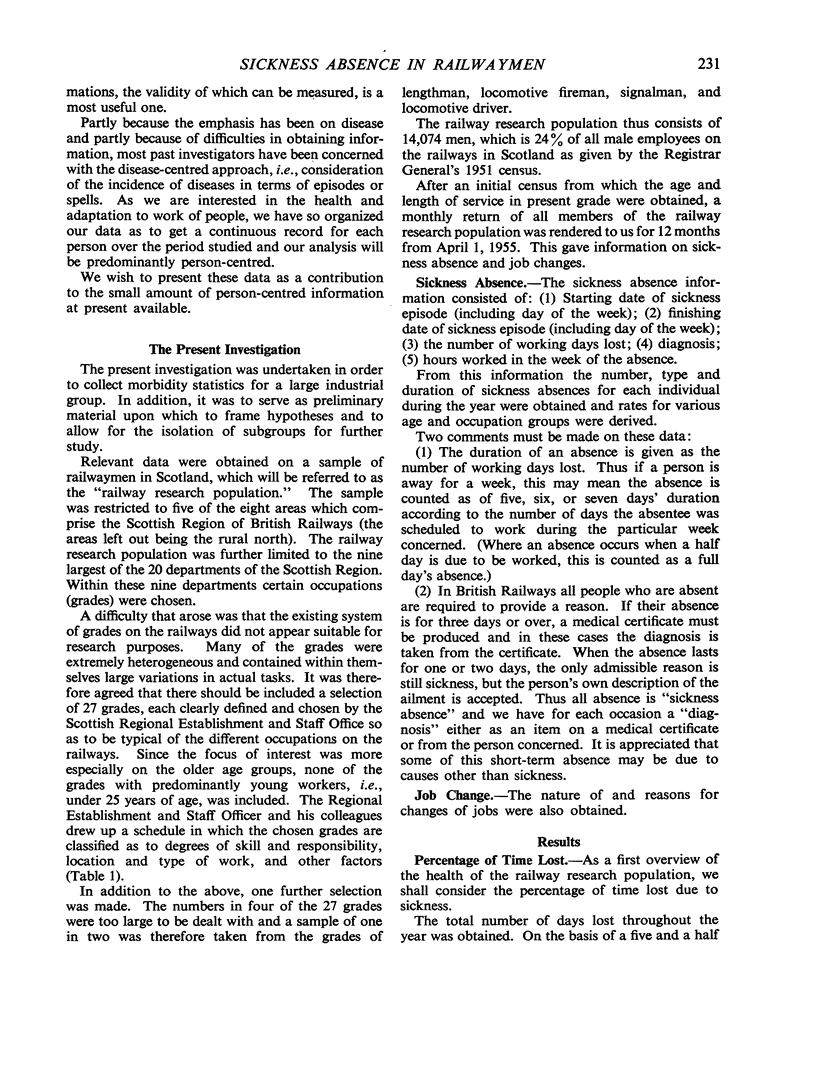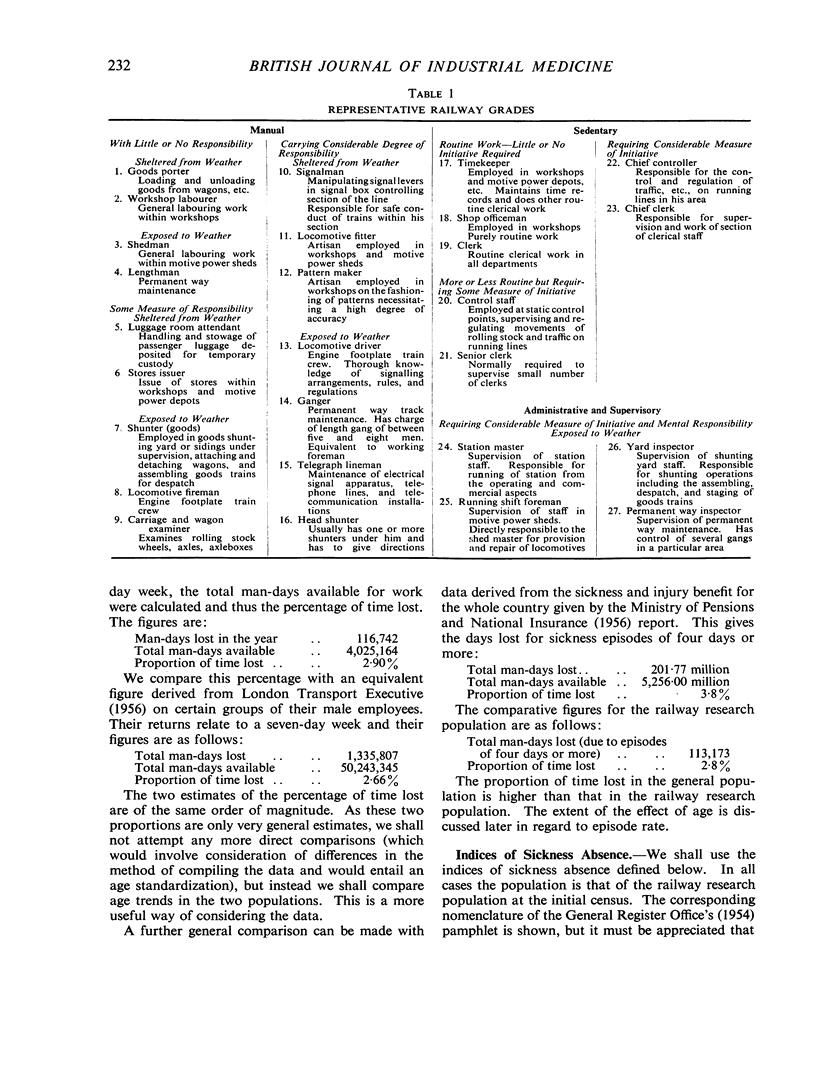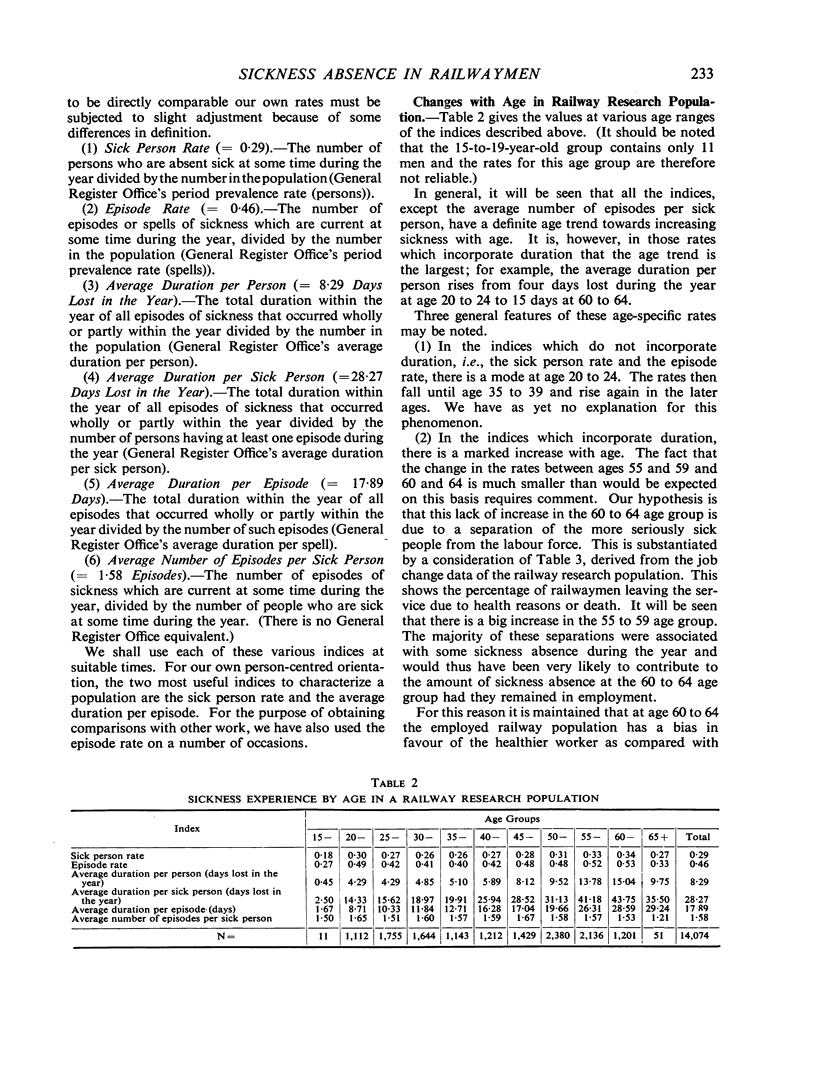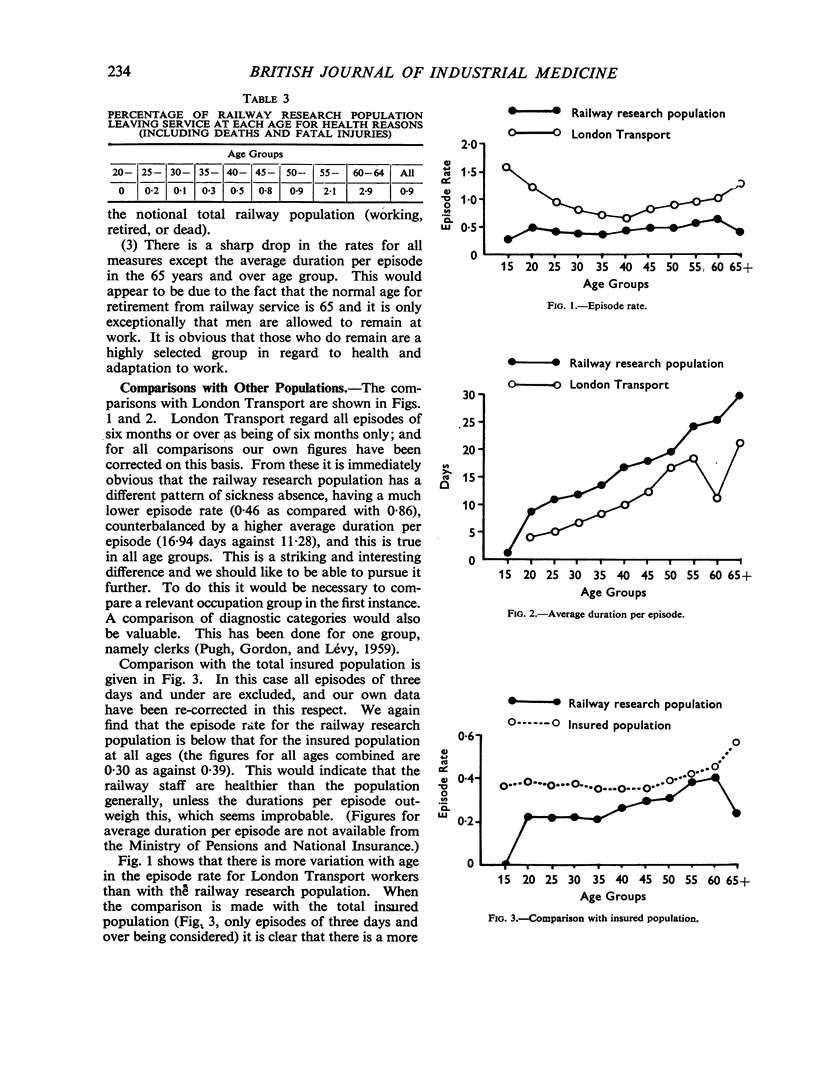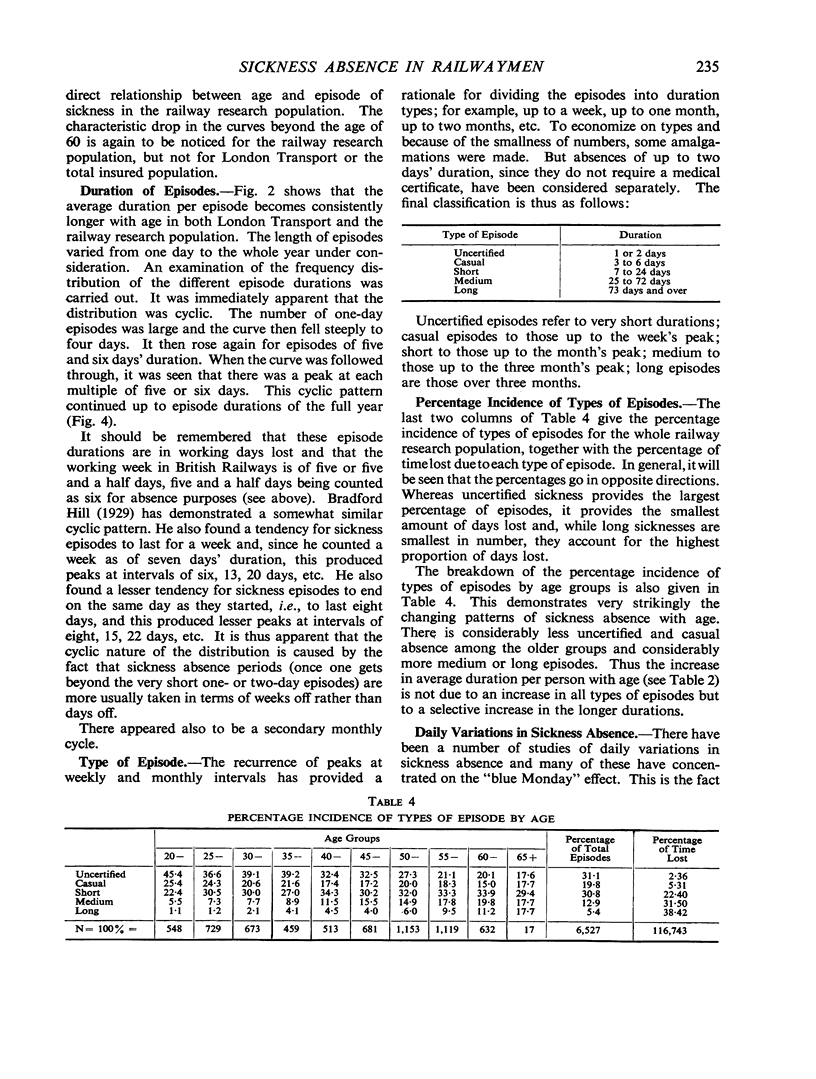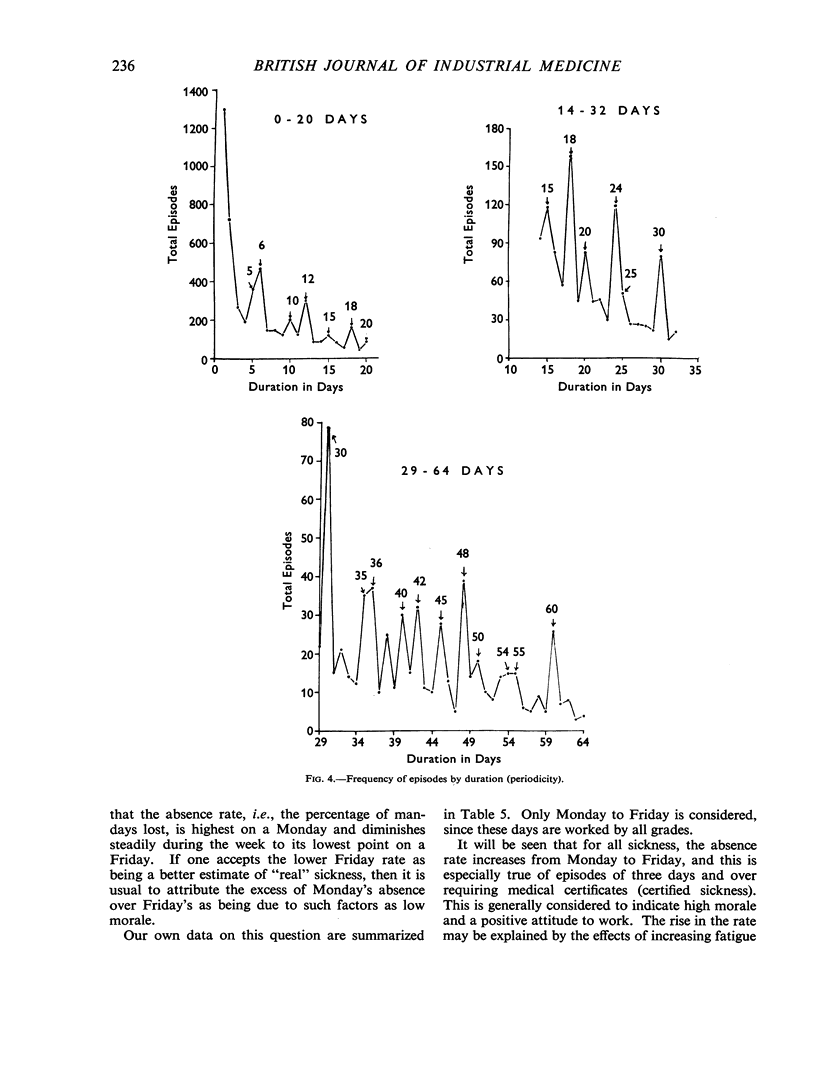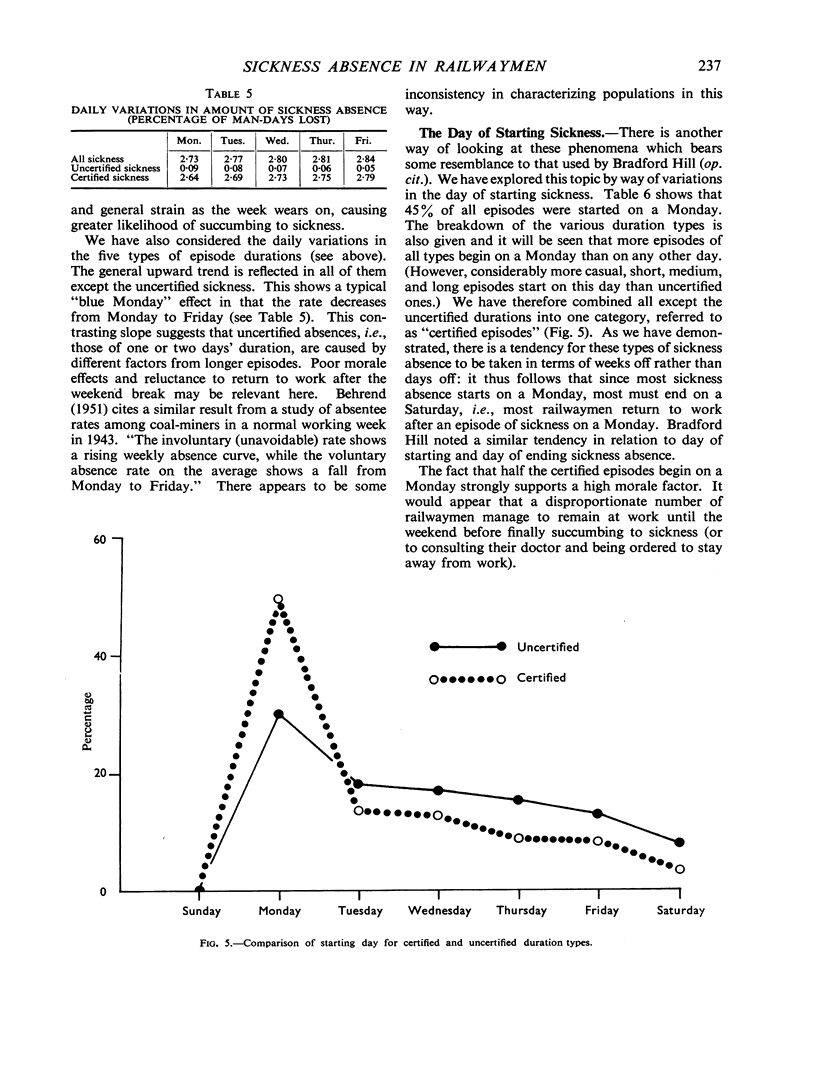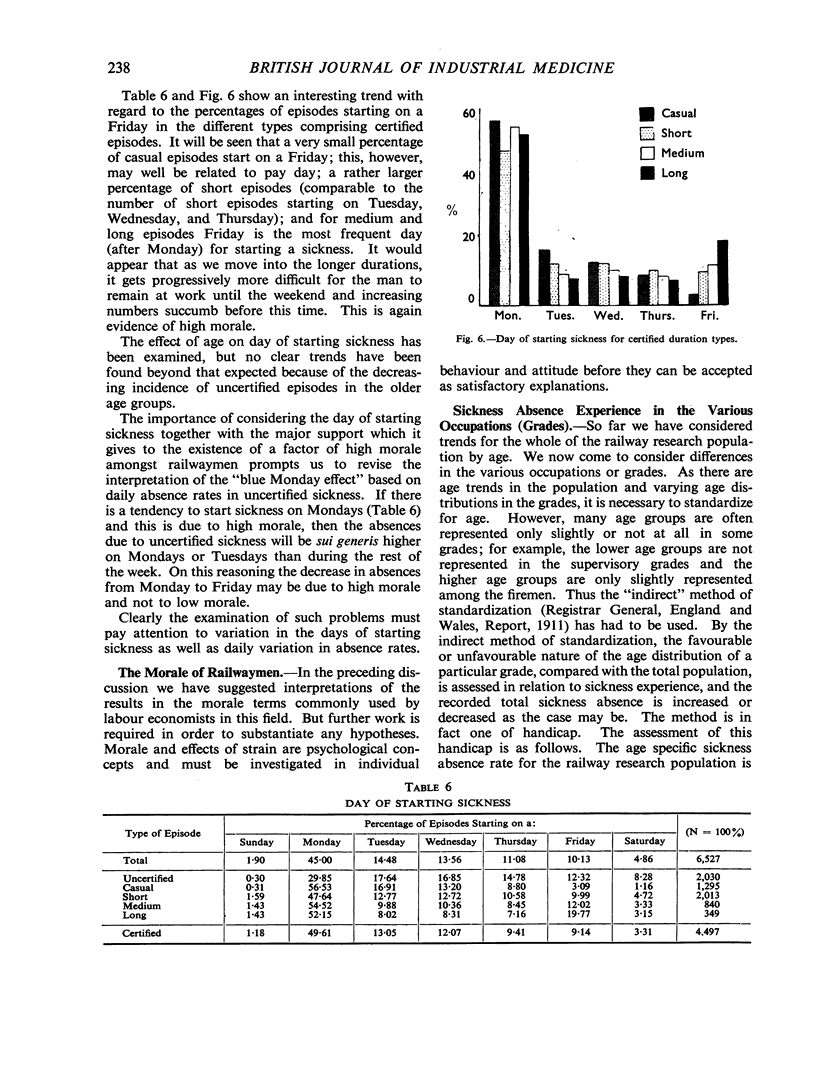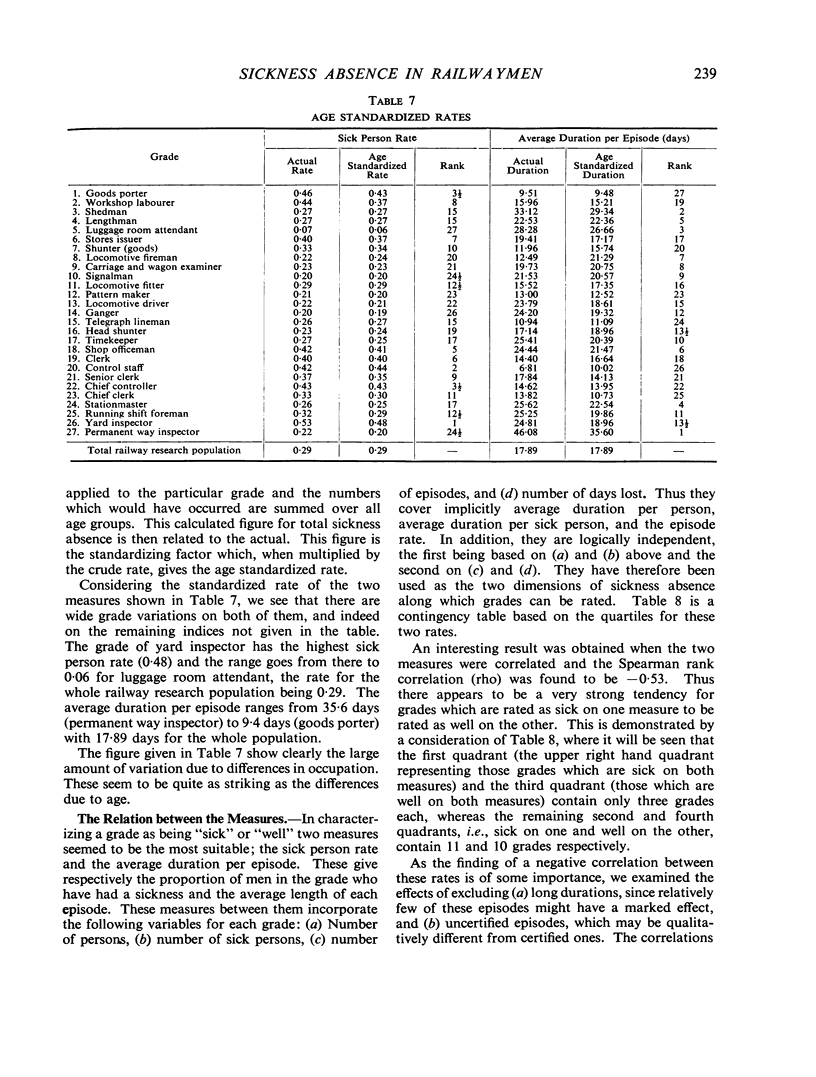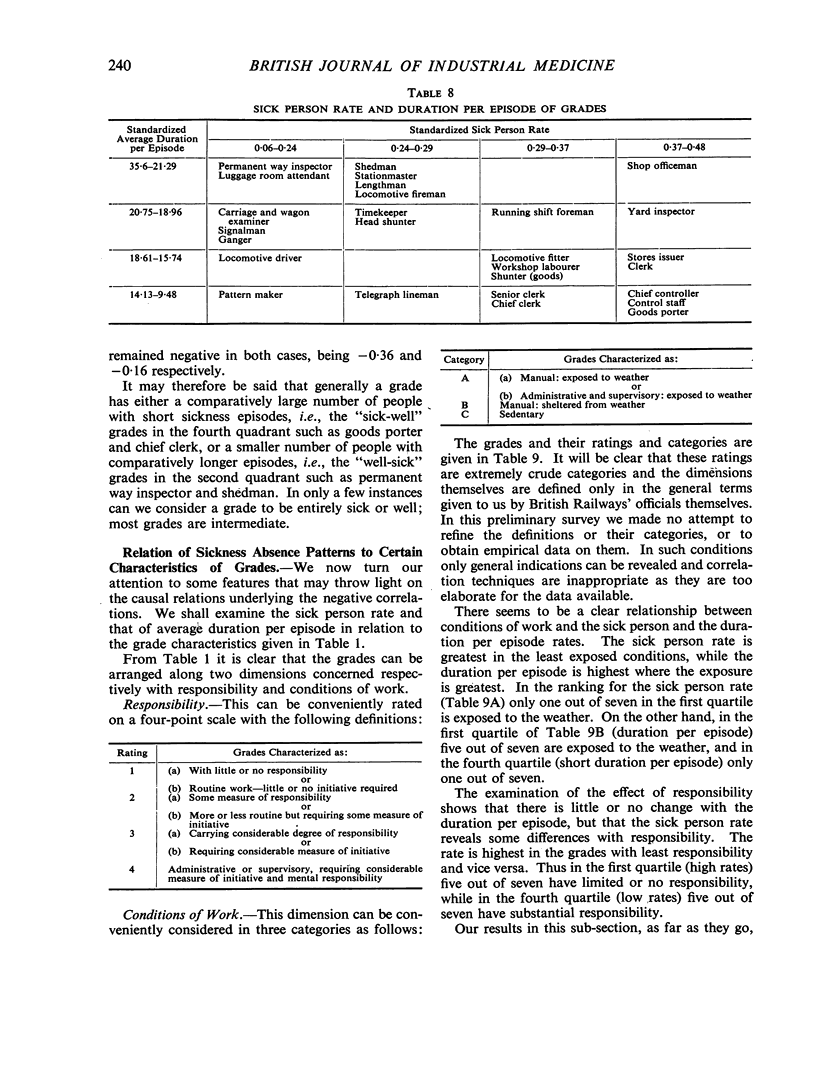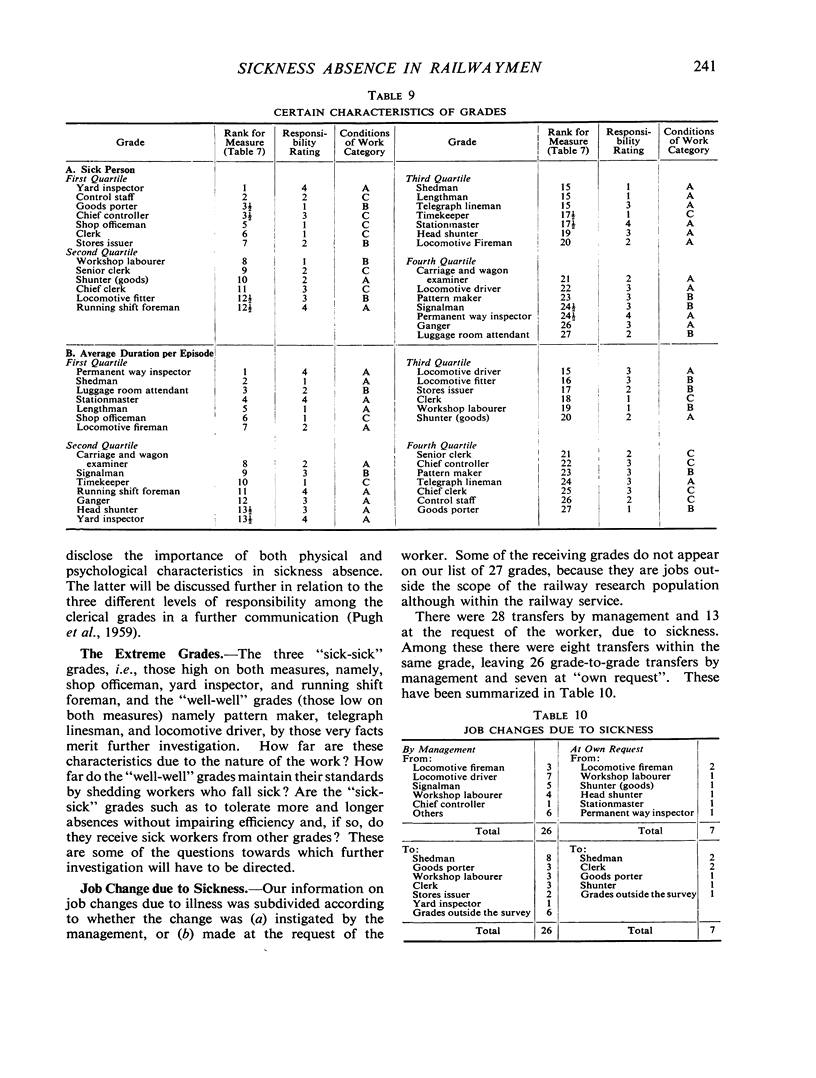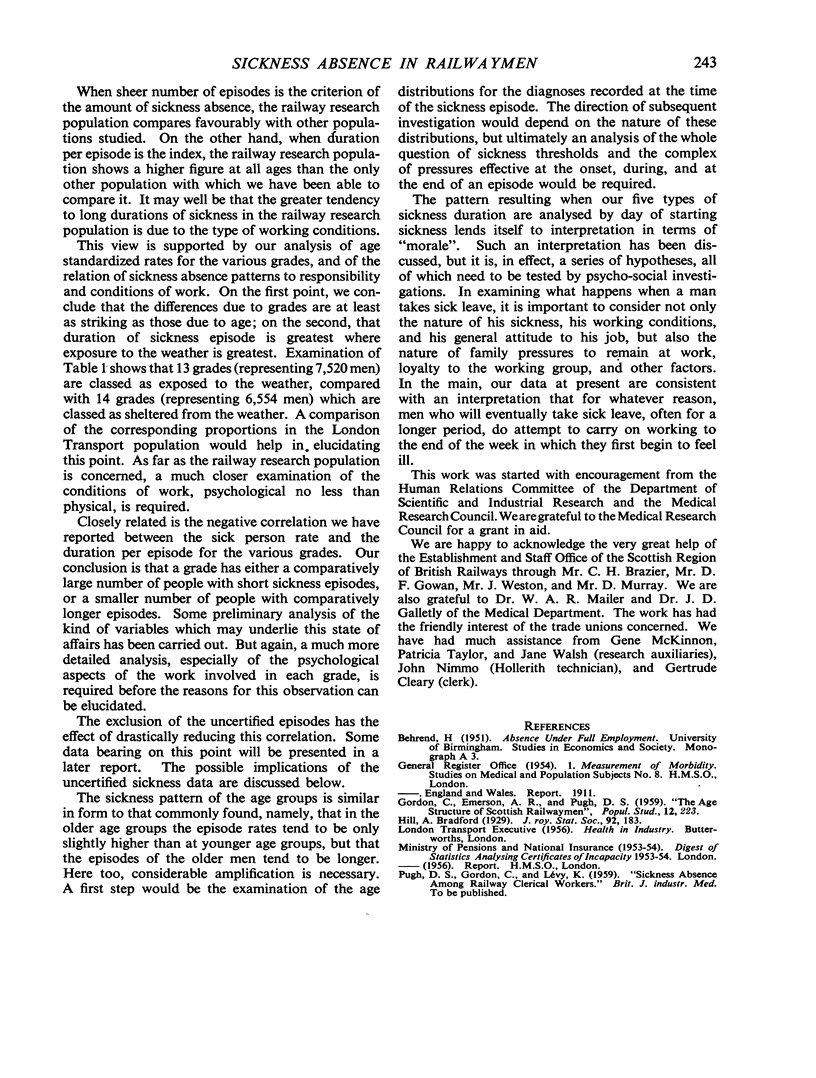Abstract
This investigation was carried out in order to obtain morbidity statistics in a large industrial population with special reference to the effects of ageing.
The population chosen, the “railway research population,” consisted of a sample of Scottish railwaymen, drawn from five of the eight areas in the Scottish Region of British Railways. Only certain occupational grades were studied.
Information was obtained over a period of one year by means of a detailed monthly return of (a) sickness absence data and (b) job changes. Indices of sickness absence were defined. The sickness absence experience of the railway research population was compared with that of other populations. It is a healthier group than the total insured population but differs in some respects from that of London Transport.
The nature of sickness absence within the railway research population was then studied. It was shown in all but one measure used that sickness tends to increase with age, the most important factor being the increase of long episodes. Examination of the frequency distribution of the duration of sickness episodes revealed that sickness absence tends to be taken in terms of weeks off rather than days off.
Analysis of the daily variation in sickness absence showed that the total absence rate increased from Monday to Friday. There was a well defined tendency for sickness to start on Mondays, and in longer episodes an additional tendency to start on Fridays. This was interpreted in terms of morale, both positive and negative.
Marked differences of the same order of magnitude as those due to age were noted in the sickness experience of the various grades, related to both conditions of work and responsibility.
The reasons for job changes were analysed and the grades to which men were transferred were identified. The choice of suitable grades for older workers was discussed.
It was concluded that working conditions might be important factors in the type of sickness absence experienced and that comparisons with other populations might be helpful in this context. More detailed work was also called for on the psychological as well as physical aspects of the work situation for both the individual and the grade.
Full text
PDF